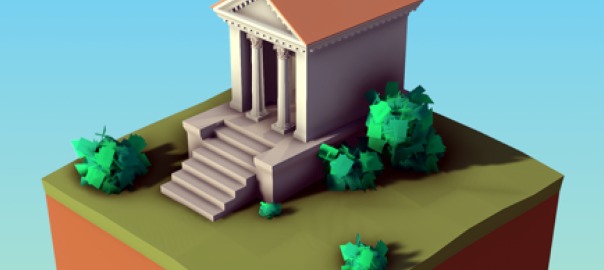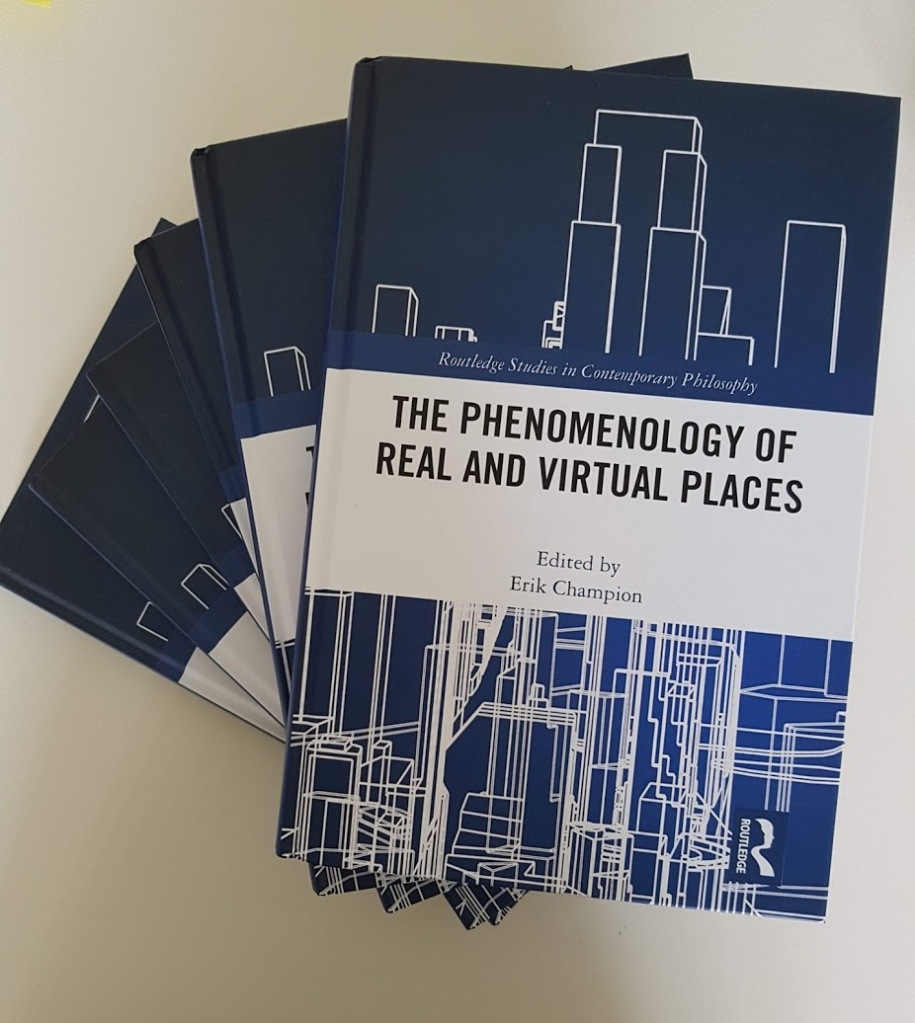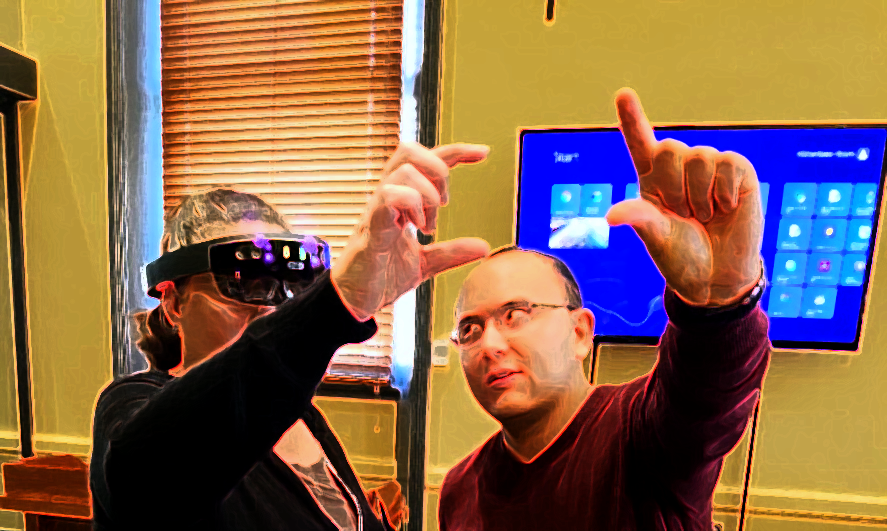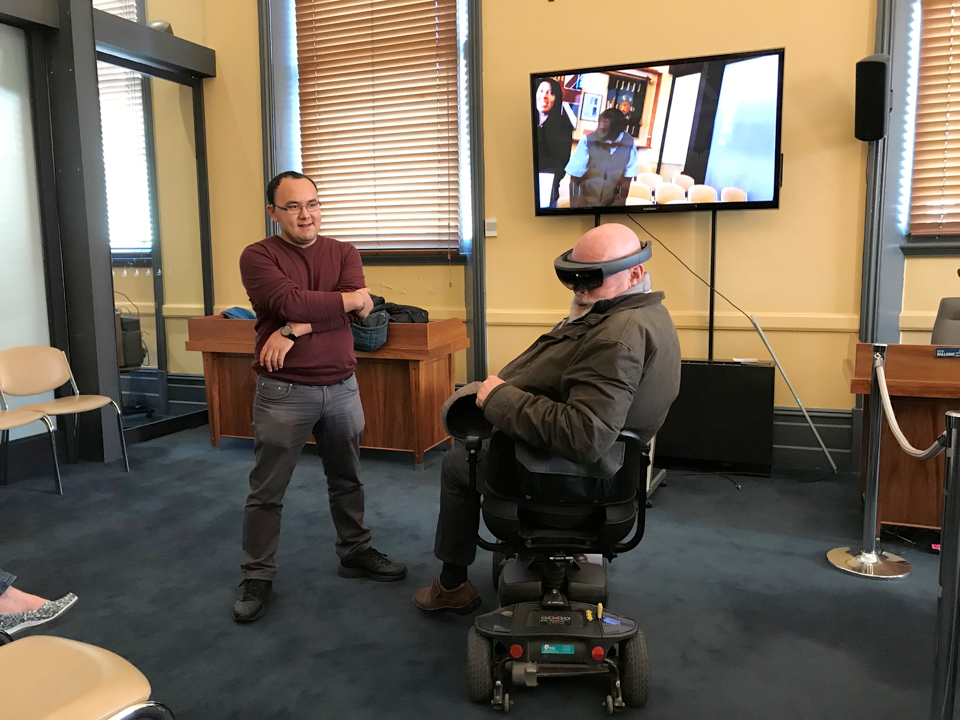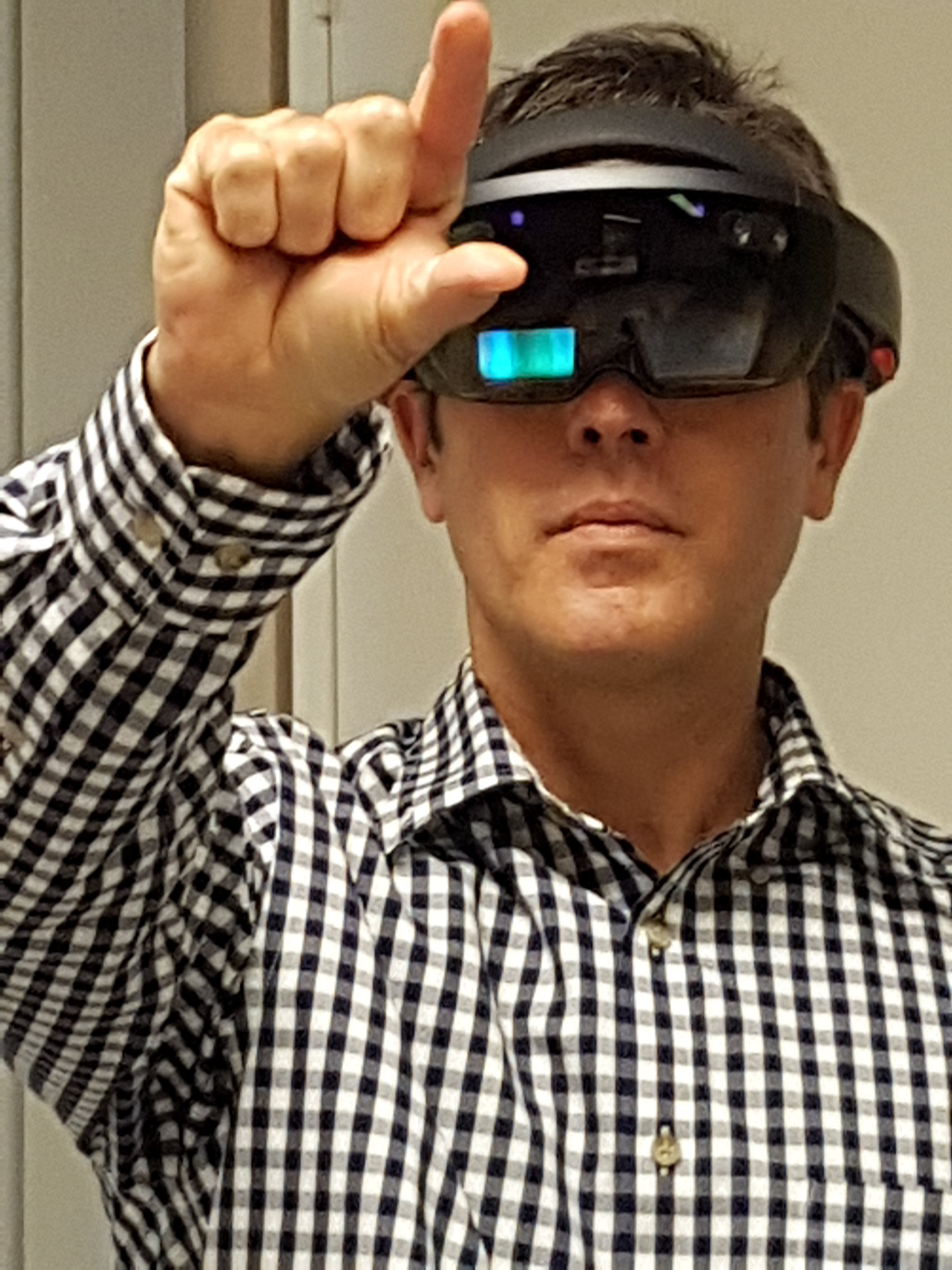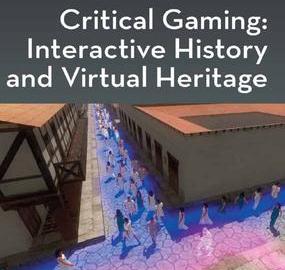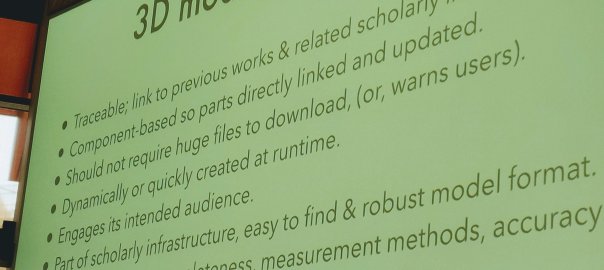Infrastructure Requirements For A World Heritage Archival Infrastructure
Conference: DH2015 UWS Sydney
Here are notes from a short talk at Digital Humanities 2015 conference, Sydney. Never published. Writing a new paper on digital and virtual heritage infrastructures at the moment. So much of the below to update!
Abstract
- This short presentation describes a project to survey, collate and develop tools for heritage sites and related built environments, focusing initially on Australia
- Consolidate and disseminate 3D models and virtual environments of world heritage sites
- Host virtual heritage examples, tutorials, tools and technologies involving community involvement and groups in policy formulation (plus PhDs and postdocs)
- Evaluation and further application of 3D digital environments and digital models for classroom use and general visualisation projects
Digital heritage disappearing faster than the real heritage
- “In the very near future some critical issues will need to be addressed; increased accessibility to (and sharing of) heritage data, consistent interface design for widespread public use and re-‐presentations of work, the formalization of a digital heritage database, establishment of a global infrastructure, institutionalized, archival standards for digital heritage and most importantly the on-‐going curation, of work forward in time as the technology evolves so that our current digital heritage projects will not be lost to future generations. We cannot afford to have our digital heritage disappearing faster than the real heritage or the sites it seeks to ‘preserve’ otherwise all of our technological advances, creative interpretations, visualizations and efforts will have been in vain.” [Thwaites, Harold. “Digital Heritage: What Happens When We Digitize Everything?” Visual Heritage in the Digital Age. Springer London, 2013. 327-‐348.]
- Virtual heritage==oxymoron
Virtual Heritage Environments (VHEs) should help the public to
- Create, share and discuss hypothetical or counterfactual places.
- Meet virtually in these places with colleagues to discuss them.
- Contextually understand limitations forced on their predecessors.
- Develop experiential ways to entice a new audience to both admire the content and the methods of their area of research.
Examples:
- Renaissance-Blaxun..GONE! Except in paper: An Authoring Tool for Intelligent Educational Games, Massimo Zancanaro, Alessandro Cappelletti, Claudio Signorini, Carlo Strapparava, *Buy eBook. We discuss the need of an authoring environment clearly separated by the game in order to allow a technical staff without any skill in either AI or Computer Science to encode the “intelligence” of the game..”
- Ancient Rome now ancient history.. GONE, REMOVED!
http://www.openculture.com/2009/03/ancient_rome_in_3d_on_google_earth.html OR http://www.youtube.com/watch?v=MqMXIRwQniA
Image: http://www.virtualtripping.com/google-earths-rome-reborn/ 2008:“The original provider of the data asked that it be removed.” - Beyond Time and Space..GONE! http://www.geek.com/news/expore-the-virtual-forbidden-city-courtesy-of-ibm-593731/ OR http://www.beyondspaceandtime.org/
Long story short, according to Mure Dickie writing in the October 10, 2008 Financial Times: “A virtual Forbidden City offering the kind of immersive and interactive online experience pioneered by multiplayer role-playing games such as Second Life.”
Missing infrastructures
- “Archaeology is messy, and it deals with three-dimensional artifacts in four-dimensional space-time. Its publications should reflect that.” Reference: Publishing Archaeological Linked Open Data: From Steampunk to Sustainability
- “Museums must work together to combat cultural destruction”-Julian Raby
- ‘You’re never going to be able to put the originals back – not only because they’ve been dispersed but because they would be prone to further destruction. We need to start thinking differently about how we activate the objects in our collections. We need to contextualise them, but also to think about how material that’s been dispersed can become a collective resource.;
URL: http://www.apollo-magazine.com/museums-must-work-together-to-combat-cultural-destruction/#.VZPR9ZFOPao.twitter
The museums of tomorrow
https://twitter.com/plevy/status/433058523836985344/photo/1
Digital Preservation Does Not Mean Digital Safety
IBM estimates 90% of the world’s data has been created in last 2 years alone.. Minecraft Denmark created at 1:1 (1tb data, 4000 billion bricks) but blown up by US hackers, refer http://blogs.lse.ac.uk/impactofsocialsciences/2014/07/07/reproducible-computing-rctrack-big-data-challenge/
Learning problems: how to
- preserve and integrate 3D/multimedia
- access and ownership of models, sites & paradata
- lack of guidelines and shared procedures
- no shared standardised evaluation data
- audience issues
DH involves community and collaboration
Digital Humanities and Open Access: An Interview with Brett Bobley of the National Endowment for the Humanities
- I’ve often said that digital humanities (or DH for short) is just an umbrella term – a term of convenience –that refers to a whole bunch of activities happening where the humanities interacts with technology.
- Perhaps one skill that most (but not all) scholars may find helpful is the ability to work collaboratively. The vast majority of the DH grants we make are to teams of people from different disciplines working together.
- ..we’re seeing more Internet-based humanities resources, databases, scholarly editions, and digital libraries that make incredible resources available for free.
- http://www.righttoresearch.org/blog/digital-humanities-and-open-access-an-interview-wi.shtml
Bad citation rates
Check out the citation rates for different fields especially humanities at the bottom.
Recomposing Scholarship: The critical ingredients for a more inclusive scholarly communication system, http://blogs.lse.ac.uk/impactofsocialsciences/2013/10/25/gray-recomposing-scholarship/
- Scholarship is not just about publication, but about interaction, interpretation, exchange, deliberation, discourse, debate, and controversy.
- Plato writes of understanding as being a kind of flash that occurs between two people trying to come to terms with something from different viewpoints, a flash that arises from the friction of discussion and momentarily floods everything with light.
- The value of a piece of scholarly text is in the interaction it has with its readers, in the sparks it generates, the friction and light that it produces – whether tomorrow, or in a hundred years time.
Research transcends disciplines, geography, institutions and stakeholders
- Stakeholder Governed – a board-governed organisation drawn from stakeholder[s]…
- Non-discriminatory membership
- Transparent operations – achieving trust … best achieved through transparent processes and operations in general..
- Cannot lobby – the community should collectively drive regulatory change.
- Living will – publicly describe a plan addressing the condition under which an organisation would be wound down, how this would happen..
- Formal incentives to fulfil mission & wind-down – infrastructures exist for a specific purpose… incentives to deliver on the mission and wind down.
Infra-infrastructure
Cultural heritage tools and archives 2013 workshop
Digital Heritage 2013
note: digital heritage 2015 Granada Spain 5-9 Oct
APA Bologna model
Blender (interactive in OpenSceneGraph)
International efforts
- 3D Icons (3D HOP) in CIDOC CRM
- Europeana
- Smithsonian Institute X3D BETA
- Fraunhoefer (X3DOM ON GITHUB)
- Ariadne
- CARARE
- EU EPOCH
- V-MUST
- DARIAH, CLARIN, DASISH
2 year workshops-collab project
NEH idea: Hold two workshops a year apart, with technical support working on projects discussed in the interim..
UCLA VSim real-time exploration of highly detailed, 3D computer models
- Supports interaction with content generated in free modeling software (e.g., SketchUp andBlender) using the common COLLADA format.
- Mechanisms fto annotate their 3D work, embed & categorize comments about modeled environment
- Mechanism for embedding spatially aware links to URLs and primary and secondary resources
- Supporting the creation of academic arguments within the virtual environments either as a linear narrative or as a sequence of annotations encountered during user-driven exploration.
- Providing a mechanism to package the 3D environment, associated narratives, and embedded resources into a single file for distribution
- Accommodating citation of project content at model, narrative, node, & embedded resource levels.
Australia
- Funding bodies (?)
- Data Capture (CSIRO, iVEC)
- Organisations (ICOMOS, CAA, ICOM, AIA)
- Shareholders (education, spatial, tourism, GLAM)
- Previous and current work (TROVE, HUNI, MUKURTU, Vanuatu Cultural Centre db, Canning Stock Route)
[Australia] historic collections could be lost to ‘digital dinosaurs’
- Brunig: 5billion industry, 25% digitised, 629km of archives
- MUST shift to open access models and greater collaboration with the public
- Explore new approaches to copyright management that stimulate creativity and support creators
- Build on aggregation initiatives such as the Atlas of Living Australia
- Answer: exploiting the potential of Australia’s Academic and Research Network (AARNet) and the National Broadband Network (NBN) for collection and collaboration
- http://www.csiro.au/Portals/Media/Australian-museums-risk-becoming-digital-dinosaurs.aspx OR
https://theconversation.com/historic-collections-could-be-lost-to-digital-dinosaurs-31524
Australasian world heritage
- 19 UNESCO WH listed sites, oldest rainforests + 1/3 world’s protected marine areas.
- Iconic: Great Barrier Reef , Wet Tropics, Daintree Rainforest (QLD); Greater Blue Mountains (NSW); NTs’ Kakadu + Uluru/Kata Tjuta National Parks; WA’s Purnululu National Park (Kimberley) + Ningaloo coast.
- 3 m hectare Tas. Wilderness World Heritage Area=7 criteria, most on planet.
- Many remote: Australian Fossil Mammal Sites-Naracoorte SA and Riversleigh QLD.
- Whole islands: QLD Fraser Island; entire Lord Howe Island Group NSW; and Macquarie, Heard and McDonald Islands in the sub-Antarctic region off the coast of Tasmania.
- Harrowing histories: 11 World Heritage Australian Convict Sites.
- Buildings: Sydney Opera House, Royal Exhibition Buildings + Carlton Gardens VIC.
Maintenance issues
- Australia-short term funding
- Conflicting or redundant organisations
- Management model
- Unforeseen costs
- Data management planning
- Compatibility and access issues
- Interactive vs purely static archive formats
Options
- Re-record everything (3D capture) accurately or agree on labelling.
- Template or provide framework to support / record sites (from charter?)
- Immersive explanation of every 3D site.
- Policies to encourage use/re-use of 3D models.
- Collection and dissemination network.
- Store models, base components, paradata, or embed exes? See https://olivearchive.org/ “for long-term preservation of software, games, and other executable content.”
Incentives
- provide showcases; critical mass for funding
- use in teaching; wider range of audiences;
- prizes awards or other recognition
- long-term depository
- citation and dynamic linking may be possible
- Modification of CC for 3D models and sites
- Changes to copyright system based on levels of detail or components
Format issues
- Anyone who has worked in the field of computer graphics for even a short time knows about the bewildering array of storage formats for graphical objects. It seems as though every programmer creates a new file format for nearly every new programming project.
- The way out of this morass of formats is to create a single file format that is both flexible enough to anticipate future needs and that is simple enough so as not to drive away potential users.
- http://paulbourke.net/dataformats/ply/
References-software
Conclusion


